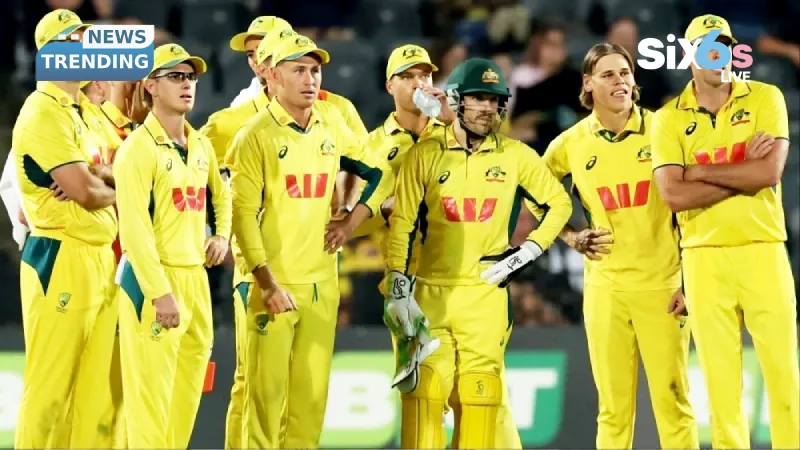Australia’s home summer was to kick off with an emphatic message against India — the tone setter pre-Ashes, a reminder of their superiority in white-ball formats. Instead, the opening ODI in Perth has quickly turned into a logistical conundrum wrapped in a selection one. With Josh Inglis ruled out with a calf strain and Adam Zampa away for family reasons, the Aussies find themselves wrangling with a sudden influx of experience, form, and fitness. What does a team suddenly do when its backup plans start needing backup plans?
The Unplanned Shuffle Before the Show
Australia’s plan was clear: to build momentum in the lead-up to the headline Test series while continuing to work out roles for themselves in the ODI format. However, with Inglis ruled out, Zampa absent from the line-up, and Alex Carey temporarily engaged in Sheffield Shield duties, the selectors have had to go into the bench. Josh Philippe returns to the ODI arena for the first time since 2021, while spinner Matthew Kuhnemann gets a recall for the opener in Perth on October 19. India, however, heads into battle at full strength, with Rohit Sharma and Virat Kohli, who headline a squad wanting to start their tour with a full head of steam.
A Calf Strain That Twisted Plans
The loss of Josh Inglis is more than a player problem. It disrupts the rhythm of the Australian middle order and creates continuity in terms of wicketkeeping. Inglis is developing into just the type of all-round player required: a hard-striking run maker in the 5 or 6 position and a tidy wicketkeeper. The calf strain makes a mess of things, requiring a rethink with Josh Philippe getting a recall with promise, but no recent evidence of performing in an ODI game, the last having been four years ago.
Spin Plans Without Their Anchor
Adam Zampa’s family absence creates a strategic hole bigger than 10 overs of leg-spin. His guile in the middle overs (Zampa averages less than 30 in that period) turns contests Australia’s way. The return of Kuhnemann is interesting but fraught with risk. He is fresh but not under pressure, as tidy as Zampa. India has a middle order of spin hitters in Virat Kohli, Iyer, and Rahul. Australia’s strategy is predicated on how cleverly they use their part-time options, which may come down to whether Glenn Maxwell pitches in with a little extra or Matt Short is given a go with his offies.
Numbers Reveal a Fragile Depth
In the last ten ODIs, Australia’s bowling economy, without Zampa, has been lifted from 5.1 to 6.3 runs per over. Also, whenever Inglis doesn’t play, the strike rates of their lower-order batters drop by nearly 20 points, in contrast to the Indian depth, where Jadeja and Axar constantly rescue their side. This shows a worrying trend: Australia’s reserves are good, but lack the recent match-hardness which the Indians thrive on. Therefore, one absence, however, is accentuated against such an elite opponent.
Australia’s first ODI is not so much about winning and losing as it is about discovering what lies beneath the glamour. With important players missing and India arriving loaded for bear, the clash in Perth is a test of adaptability rather than ability. If the replacements shine, the Australians might convert a crisis into an opportunity. But if the cracks appear early, the momentum they sought before the Ashes could be dissipated before the Test summer opens with the first ball bowled.
Key Takeaway:
Australia’s missing duo may expose weaknesses or reveal hidden strength as the India series doubles as a dress rehearsal for bigger battles ahead.
Stay updated on the latest cricket news and exciting updates at Six6slive. Dive into our in-depth articles and analyses to connect with the action today!
